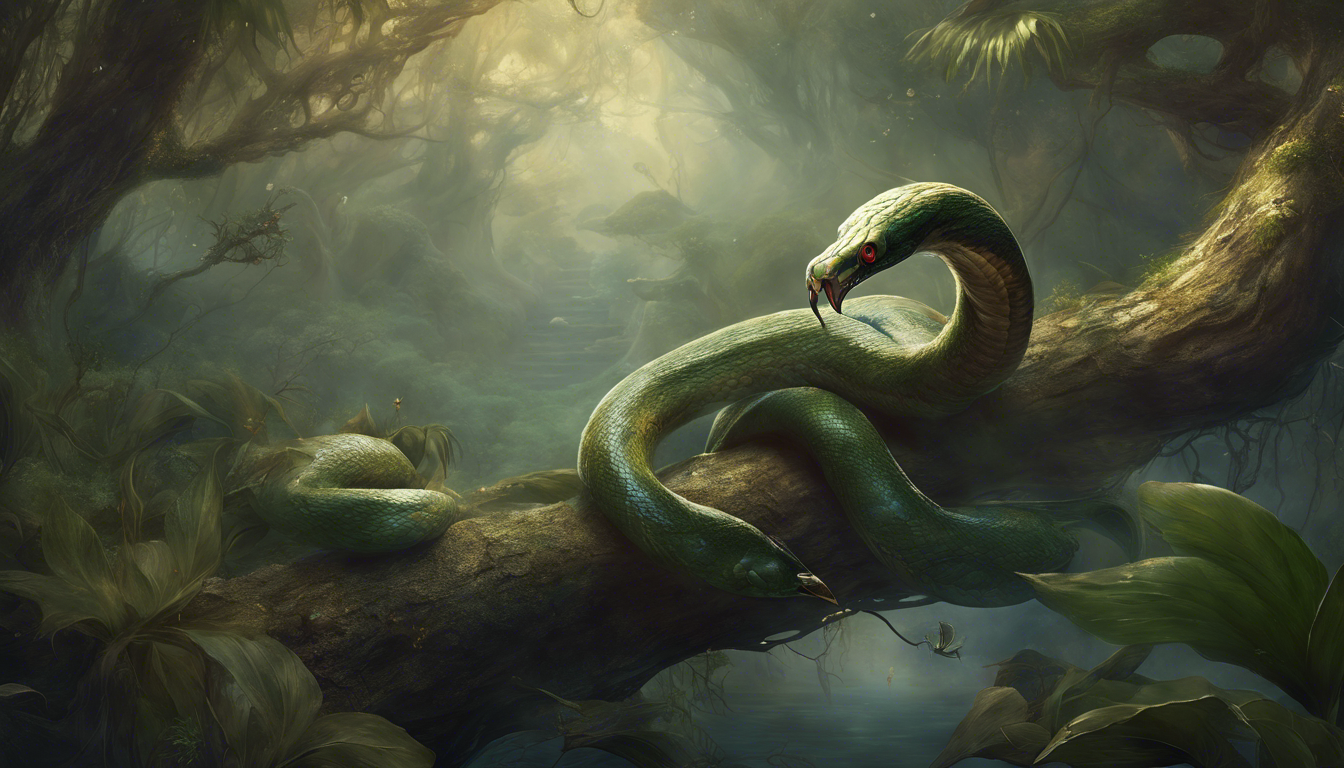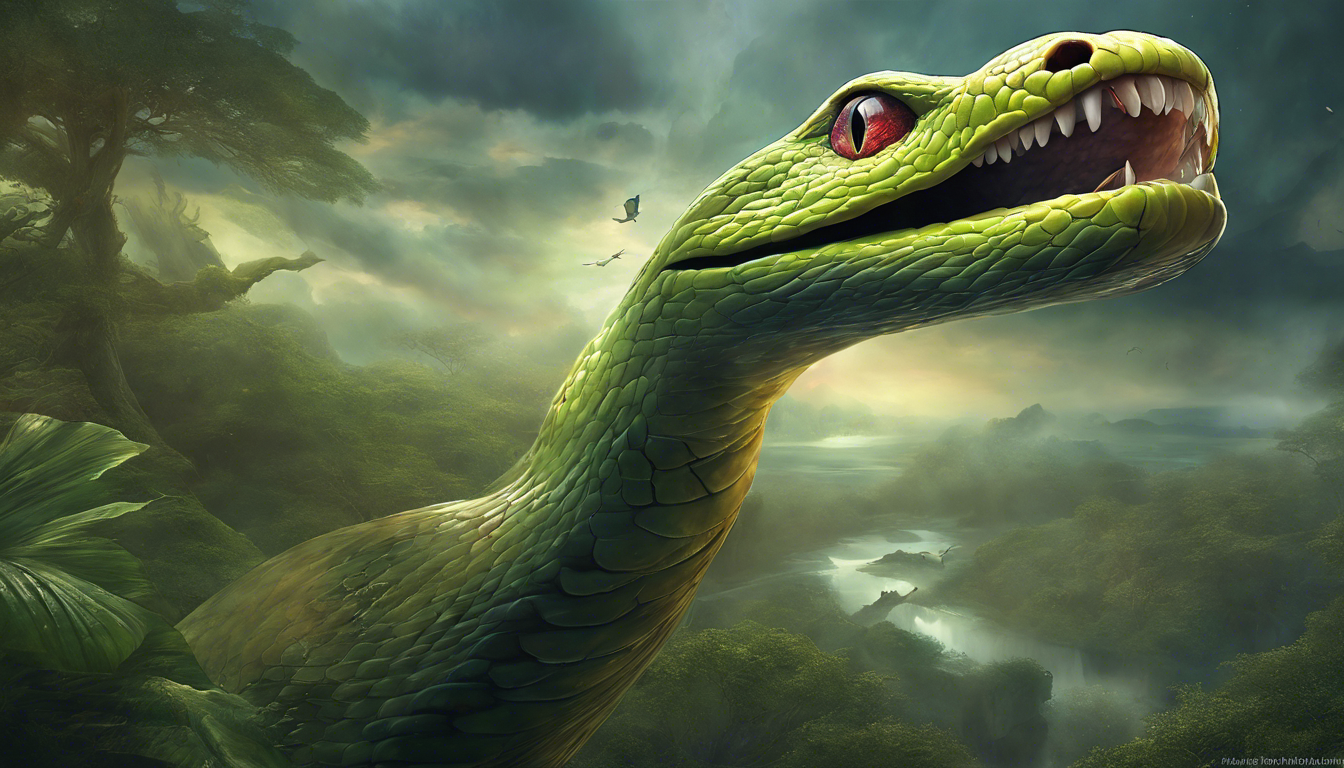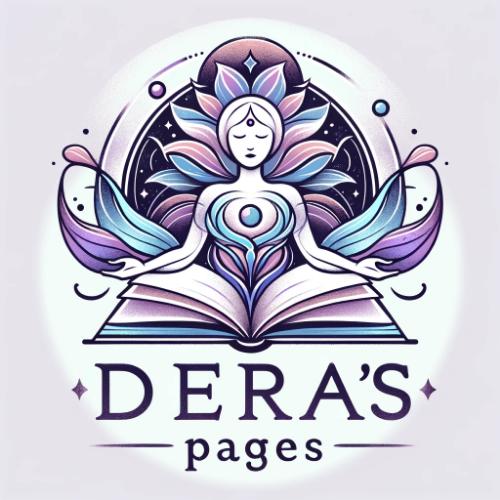The Hunting Behavior of the Snake Mouth Bird
The Unique Adaptations of the Snake Mouth Bird
The Snake Mouth Bird, also known as *scientific name*, is a fascinating species found in the tropical rainforests of South America. What sets this bird apart from others is its remarkable hunting behavior. Equipped with a specialized beak resembling a snake’s mouth, this bird has evolved unique adaptations to thrive in its environment.
Hunting Techniques and Strategies
*Snake Mouth Bird* employs a variety of hunting techniques to catch its prey. One of its most effective strategies is mimicry, where it mimics the movements of a snake to startle and confuse its prey. This behavior allows the bird to surprise its target and strike with precision.
Additionally, the *Snake Mouth Bird* is a skilled flyer, capable of navigating through dense vegetation with agility and speed. This aerial prowess aids in ambushing unsuspecting prey from above, further showcasing the bird’s hunting prowess.
Prey Selection and Feeding Habits
The *Snake Mouth Bird* has a diverse diet, preying on insects, small mammals, and even amphibians. Its hunting behavior is finely tuned to target specific types of prey, showcasing the bird’s adaptability and resourcefulness in the rainforest ecosystem.
After a successful hunt, the *Snake Mouth Bird* uses its beak to swiftly dispatch its prey before consuming it. This efficient feeding process ensures that the bird maximizes its energy intake while minimizing energy expenditure.
Impact on the Ecosystem
The hunting behavior of the *Snake Mouth Bird* plays a crucial role in maintaining ecological balance within the rainforest ecosystem. By controlling the population of certain prey species, the bird helps prevent overpopulation and ensures the health of the ecosystem as a whole.
Furthermore, the *Snake Mouth Bird* contributes to nutrient cycling through its feeding habits, redistributing essential nutrients as it consumes and processes its prey. This process supports the diverse plant life in the rainforest and sustains the overall biodiversity of the ecosystem.
Conservation Considerations
As human activities continue to impact the rainforest habitat of the *Snake Mouth Bird*, conservation efforts are essential to protect this unique species. Preserving the bird’s natural environment and reducing disruptions to its hunting behavior are crucial steps in ensuring the long-term survival of the species.
Education and awareness about the importance of the *Snake Mouth Bird* in the ecosystem can also help garner support for conservation initiatives, ultimately contributing to the preservation of biodiversity in the rainforest.
Relationship with Snakes in the Ecosystem

Snakes play a crucial role in maintaining the balance and health of various ecosystems around the world. These fascinating creatures are not only key predators, but they also contribute significantly to the overall biodiversity and functioning of ecosystems.
The Role of Snakes as Predators
Snakes are essential predators in many ecological systems, helping to control the populations of rodents, insects, and other small animals. By preying on these species, snakes help to keep their numbers in check, preventing overpopulation and imbalance in the ecosystem. This predator-prey relationship is vital for the overall health and stability of the ecosystem.
Contribution to Biodiversity
In addition to their role as predators, snakes also contribute to the biodiversity of ecosystems. With a wide range of species occupying diverse habitats, snakes play a significant part in the intricate web of life within an ecosystem. Their presence helps to create a rich and varied environment that supports a multitude of plant and animal species.
Impact on Food Chains
Snakes are key players in food chains, occupying various trophic levels depending on their size and diet. As both predators and prey, snakes serve as connectors between different species within the ecosystem. Their interactions with other animals influence the flow of energy and nutrients, shaping the dynamics of the entire food web.
Conservation Importance
The conservation of snakes is crucial for maintaining the balance of ecosystems. Due to habitat loss, climate change, and human activities, many snake species are facing threats to their populations. Protecting these reptiles is not only essential for their survival but also for the health and resilience of the ecosystems they inhabit.
In conclusion, snakes play a significant role in ecosystem dynamics, influencing the balance, biodiversity, and functioning of natural systems. Understanding and conserving these fascinating creatures is essential for preserving the delicate harmony of our planet’s ecosystems.
Impact on Biodiversity and Population Dynamics

Ecosystems play a crucial role in influencing biodiversity and population dynamics within a given region. The intricate web of interactions between living organisms and their environment shapes the diversity of species and the fluctuations in population numbers over time.
Biodiversity in Ecosystems
Biodiversity refers to the variety of life forms present in a particular habitat or ecosystem. Ecosystems with high biodiversity levels are often more resilient to environmental changes and disruptions. This is because different species within an ecosystem play unique roles in maintaining ecological balance and functioning.
For instance, a diverse plant community can support a wide range of animal species by providing various habitats and food sources. The presence of multiple species also reduces the risk of population crashes and promotes stability within the ecosystem.
Population Dynamics in Ecosystems
Population dynamics in ecosystems involve the study of how populations of organisms change over time. Factors such as birth rates, death rates, migration, and interactions with other species all contribute to the fluctuations observed in population sizes.
Understanding population dynamics is essential for predicting how ecosystems may respond to disturbances or environmental changes. For example, a decline in a predator species could lead to an increase in prey populations, causing a cascade effect throughout the ecosystem.
Interconnectedness of Biodiversity and Population Dynamics
The relationship between biodiversity and population dynamics is intricately connected. Changes in one aspect can have ripple effects throughout the entire ecosystem. A loss of biodiversity can disrupt population dynamics, leading to imbalances and potential collapse of the ecosystem.
Conversely, stable population dynamics can promote biodiversity by allowing for coexistence and interactions among different species. Each species contributes to the overall resilience and health of the ecosystem, highlighting the importance of maintaining both biodiversity and stable population dynamics.
In conclusion, the impact of ecosystems on biodiversity and population dynamics underscores the delicate balance and interdependence of all living organisms within a given environment. By preserving biodiversity and understanding population dynamics, we can ensure the long-term health and sustainability of our natural world.
Conservation Efforts for the Snake Mouth Bird

The Snake Mouth Bird, also known as the Scaled Andronis, is a fascinating species that plays a crucial role in maintaining the balance of ecosystems. However, due to habitat loss and other threats, the population of this unique bird has been declining rapidly. In order to protect and conserve the Snake Mouth Bird, various conservation efforts are being implemented.
Habitat Preservation
Habitat preservation is key to the conservation of the Snake Mouth Bird. Efforts are being made to protect the natural habitats where these birds reside, such as wetlands, marshes, and coastal areas. By preserving these crucial ecosystems, the bird’s foraging and nesting grounds are safeguarded, allowing the species to thrive.
Anti-Poaching Measures
Anti-poaching measures are being put in place to combat illegal hunting and trapping of the Snake Mouth Bird. Poaching poses a significant threat to the population of these birds, as they are sought after for their unique feathers and eggs. Strict enforcement of laws and increased surveillance are crucial in deterring poachers and protecting the species.
Community Engagement
Engaging local communities in conservation efforts is essential for the protection of the Snake Mouth Bird. Community engagement programs educate residents on the importance of preserving natural habitats and wildlife, encouraging them to become stewards of the environment. By involving communities in conservation initiatives, a sense of responsibility and pride is fostered, leading to long-term sustainability.
Research and Monitoring
Continuous research and monitoring are critical for understanding the behavior and population trends of the Snake Mouth Bird. By studying their habits, migration patterns, and breeding cycles, conservationists can develop targeted strategies to ensure the species’ survival. Monitoring populations and habitat changes also provide valuable data for adapting conservation efforts accordingly.
In conclusion, concerted efforts are underway to safeguard the Snake Mouth Bird and its fragile ecosystem. Through habitat preservation, anti-poaching measures, community engagement, and ongoing research, we can work together to protect this unique species and ensure a harmonious balance in our natural world.


Article written by Dera
Greetings, I am Dera, a 35-year-old individual with a deep passion for spirituality. Through my website, I aim to share my insights and knowledge to help others on their spiritual journey. Join me on the path to inner peace and enlightenment.